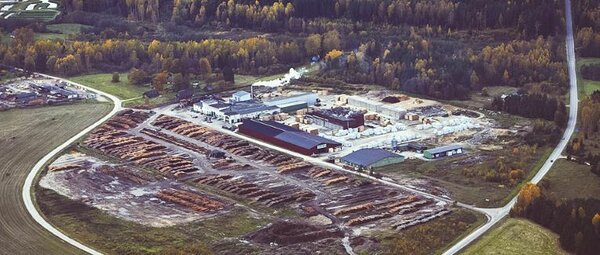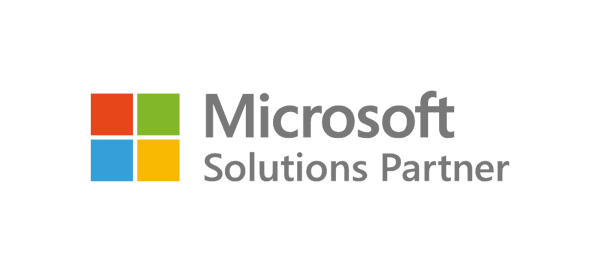AS Toftan
Toftan is a sawn timber producer located in Southern Estonia. Since 2019, BRS Networks Baltic has been their IT partner. During a meeting, Toftan's CEO, Martin Arula, and Log Purchasing Manager, Jaanus Lehes, reviewed the progress of our collaboration and discussed the IT challenges that BRS Networks Baltic has successfully overcome.
AS Toftan is the second largest sawmill in Estonia, with a distinctive technological combination that enables the flexible production of high-quality sawn timber in varying sizes and quantities while reducing waste.
Toftan primarily sources its raw materials from forests in Central Estonia and Eastern Latvia. The production process adheres to sustainable forest management conditions, supported by several certifications.
In large-scale production, the role of reliable information technology cannot be overstated, particularly in the areas of data collection and analysis.
Toftan has partnered with BRS Networks Baltic to ensure smooth operations and efficient performance of their IT.
What was the IT situation before starting cooperation with BRS Networks Baltic?
Before the implementation of the ERP solution, Toftan's IT was managed by in-house people who were able to handle IT tasks alongside their primary responsibilities. There was always someone available to assist with any issues, and some employees were particularly knowledgeable about IT. Certain individuals were responsible for ordering IT devices, and some employees appeared to be more IT-oriented than their actual job description.
However, as the company grew and data processing needs increased, the implementation of the ERP solution became necessary. It was no longer feasible to rely solely on self-taught IT management, and external help was required.
Toftan is grateful to its employees for their efforts in managing IT matters in-house. Prior to the implementation of the ERP solution and the addition of a second factory, this was a practical and cost-effective approach to IT management, and there was no need or expectation for anything more.
Seeking IT help is a common step for most companies. Rarely does a company turn to IT partner immediately after completing business registration procedures. Instead, they attempt to manage IT on their own until they encounter difficulties. – Martin Arula, CEO of AS Toftan
What IT challenges prompted you to turn to an external IT partner?
We implemented Microsoft Dynamics 365 Business Central (formerly known as Microsoft Dynamics NAV). The software implementation process involved several years of work, which raised doubts about the entire company's hardware and software situation.
The addition of the second factory resulted in a significant surge in the amount of data that needed to be processed. Production volume increased by a third but the number of data streams generated per minute grew five-fold compared to the previous rate.
However, during the implementation of the ERP, issues arose with data processing and analysis. To address these problems, it was suggested that we use newer, more powerful machines. We followed the advice of our implementation partner, but the performance of Dynamics 365 continued to decline, and the expected results were not achieved.
While we were initially promised that reports would open in just one second, this was only true for small data sets. When we attempted to open two months' worth of data, it took so long that we had time to make coffee and complete other tasks before returning to your computer, and it was still frozen.
We put a stop to the implementation process to prevent a scenario where we would spend half a million, there is no working solution, and we have to buy a new big server every six months.
We reached a version of the accounting software that was able to collect data, but unable to analyze or generate reports. As a solution, we started using a separate reporting environment and realized that consolidating everything into one ERP was not the best approach. Instead, we opted for using different solutions for specific tasks that were integrated and worked together seamlessly.
As our reporting tool, we adopted Qlik data analysis software, which creates meaningful reports quickly based on data collected by Microsoft Dynamics 365. Qlik's capability to generate statistics using data on every log and piece of wood was precisely what we needed.
We dreamed about working with data, manipulating and analyzing it, and creating statistics, but we had no idea how it could be done. In our amateur IT environment, we did not possess such capabilities. – Jaanus Lehes, Log Purchasing Manager of AS Toftan
Observing the power of numbers and recognizing the limitations of our current approaches prompted us to realize the need for an audit. During the audit, we collaborated with BRS to develop proposals and solutions, we decided to pursue and BRS started as our IT partner.
What were your expectations of BRS as an IT partner?
Our goal was to see an overall improvement in our IT situation, and to resolve issues related to our ERP.
As an external partner, we were looking for BRS to have a standardized business model and service delivery methods that would enable us to work together remotely. We also expected that our information would be kept secure and that we would not encounter any issues that might arise if we had an in-house IT person.
There was no risk of one day someone not showing up for work and leaving everything at a standstill. If someone from BRS were to leave, we would still be able to rely on the their helpdesk for support. BRS has a strong team of professionals, so there would be others available to take on the responsibilities of the departing employee. Additionally, it necessary, BRS could quickly hire and train a new employee to ensure that our IT needs continue to be met.
What problems has BRS solved?
At first, we were quite conservative in our approach and allowed BRS to gradually start working on our IT infrastructure. We replaced most of the office IT equipment and fixed our network solutions.
Initially, we questioned whether it was necessary to invest in a computer that costs a thousand euros. However, after using it without any issues for 2-3 years, or even 5 years, we have come to believe that it is worth investing in a slightly better computer.
BRS is responsible for managing all our software solutions, including the security measures that keep our network safe from attackers. We have hosted Qlik server with BRS.
Today, various issues and performance problems we had with Microsoft Dynamics 365 have been resolved. We believe it was wise to choose a service provider who is separate from the specific ERP system.
Our entire IT infrastructure was fixed before the situation caused by the coronavirus outbreak. We now have the capability to work remotely, hold Teams meetings, and employees can participate from both home and office.
How do you evaluate the cooperation with BRS?
I haven't met anyone who has had a problem with their computer and not received help. Whether it's a printing issue, a connectivity problem, or a software crash
... – Martin Arula, CEO of AS Toftan
The biggest compliment from Estonian is that there is nothing bad to say and it speaks for itself.
Years ago, there were situations where we complained in the coffee room that this or that is not working. Now, even if something is down, it gets fixed quickly and works.
Evaluating IT services is difficult because most of the time it is delivered invisibly, and you can't understand the service until something is missing or wrong, and that is a kind of quality mark.
For us, IT service has become part of everyday life that is well-functioning and secure. When we think about all the email and integration and the entire Microsoft 365 concept, sometimes we wonder how things were even done before, but somehow they were.
I don't remember ever having doubts about whether we made the right decision to solve IT this way with BRS. Such doubt has not arisen.
How do you feel about the cost aspect of the entire IT service?
As we went through the process, we realized that we were moving towards a world of higher costs, which was initially difficult to accept.
Typically, an in-house solution is much cheaper, and if there was no IT budget before, those costs were invisible. Often, we would just repair old equipment to keep it functioning.
Although costs have increased, as long as we have income, they are not a significant burden. We have fixed costs and equipment-related expenses, but we are currently managing them well. While we could probably find more cost-effective solutions, it is no longer a priority for us.
Future
Looking ahead, we anticipate that our data mass will continue to grow, leading to more complex analyses, business processes, and a greater need for data. We recognize the importance of this, but did not have the means to do so previously. At present, we are satisfied with the service provided by BRS.






